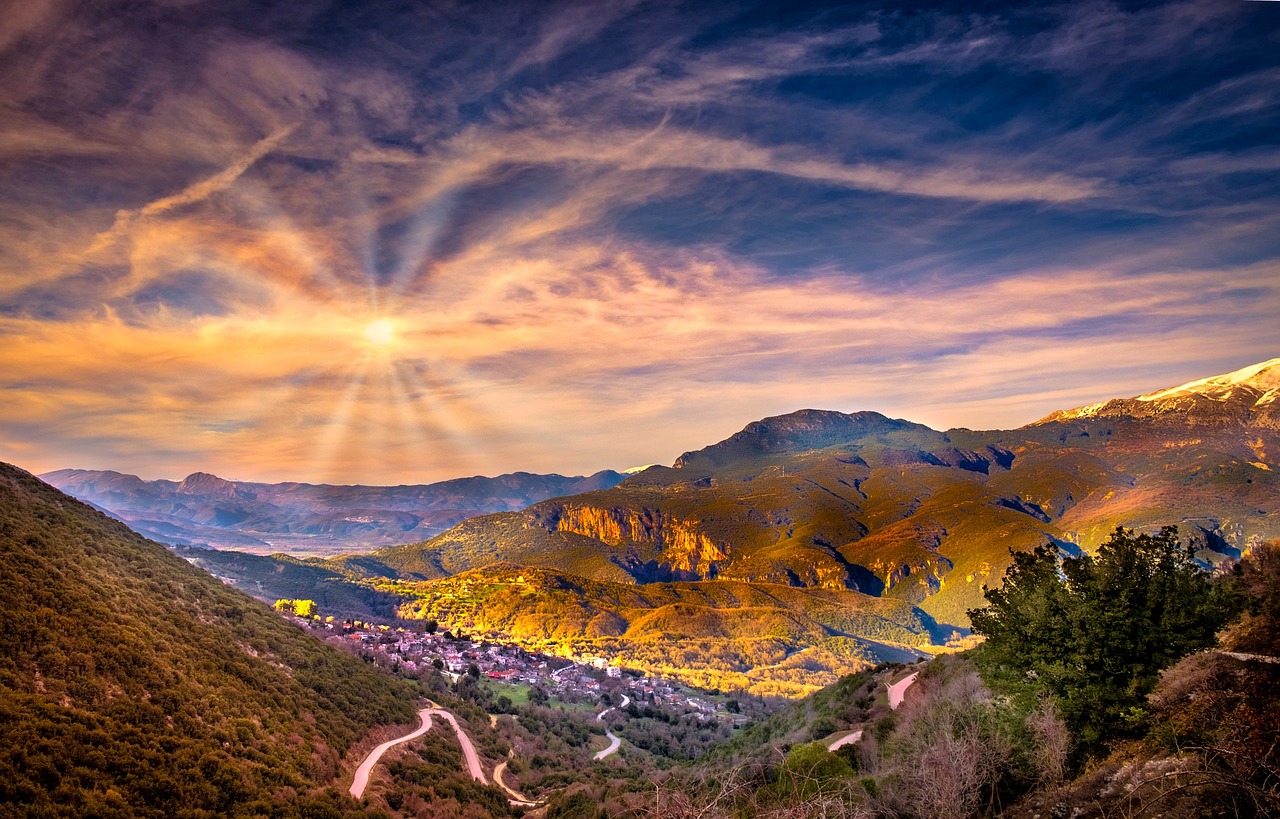Greece is situated at the southernmost part of the Balkan Peninsula, extending southward into the surrounding seas, including the Aegean, Ionian, Mediterranean, and Thracian seas, along with an extensive archipelago comprising nearly 1,500 islands. Noteworthy islands such as Crete and Evia are the largest, while major island groups encompass the Argo-Saronic, Cyclades, Dodecanese, Ionian Islands, Northeast Aegean, and Sporades.
The geography of Greece is characterized by its mountainous terrain, making it one of Europe’s most rugged countries. Its coastline, stretching approximately 13,676 kilometers, features numerous inlets and gulfs. The western part of Greece is dominated by the imposing Pindus mountain range, an extension of the Dinaric Alps, where altitudes frequently exceed 2,500 meters. This region is interspersed with lakes, rivers, and wetlands.
Mount Olympus, the highest mountain in Greece, reaches an elevation of 2,918 meters (9,570 feet). Nearby, the Meteora rock formations rise, consisting of massive columns of stone shaped by erosion over millennia. In the far north, the Southern Rhodope Mountain range showcases dense forests. The country is also home to ancient volcanoes located on islands such as Kos, Methana, Milos, Nisyros, Poros, and Santorini. Currently, there are no active eruptions, with significant volcanic activity recorded last in Nisyros in 1887/1888 and Santorini in 1950.
The Peloponnese Peninsula is connected to the mainland via the Corinth Canal, a man-made waterway that spans 4 miles and is mainly used for commercial shipping. While many smaller rivers in Greece may dry up during the summer heat, significant rivers include the Acheloos, Aliacmon, Evros, and Pinios. Notable lakes in the region comprise Trichonis, Vegoritis, and Volvi.
Administrative Divisions of Greece
The country, officially known as the Hellenic Republic, is organized into 13 administrative regions (perifereies) and one autonomous monastic state. In alphabetical order, the regions are: Anatoliki Makedonia kai Thraki (East Macedonia and Thrace), Attiki (Attica), Dytiki Ellada (West Greece), Dytiki Makedonia (West Macedonia), Ionia Nisia (Ionian Islands), Ipeiros (Epirus), Kentriki Makedonia (Central Macedonia), Kriti (Crete), Notio Aigaio (South Aegean), Peloponnisos (Peloponnese), Sterea Ellada (Central Greece), Thessalia (Thessaly), and Voreio Aigaio (North Aegean). The autonomous monastic community of Agion Oros (Mount Athos) is located in northeastern Greece.
Athens, the capital and largest city, is situated within the Attica region, extending into the Aegean Sea. Renowned as one of the oldest continuously inhabited cities globally, Athens is a hub of administration, culture, industry, and economy in Greece, as well as a key economic center in Southeastern Europe. The port of Piraeus, part of Athens, ranks as the second-largest port worldwide and is the largest passenger port in Europe.
Greece’s Geographical Location
Positioned in the southeastern corner of Europe, Greece lies at the confluence of Europe, Asia, and Africa. It spans both the Northern and Eastern hemispheres. The country shares borders with North Macedonia and Bulgaria to the north, Albania to the northwest, and Turkey to the northeast. The surrounding seas include the Aegean Sea to the east, the Ionian Sea to the west, the Cretan Sea, and the Mediterranean Sea to the south.
Bordering Countries: Albania, North Macedonia, Turkey, Bulgaria.
Key Facts about Greece
- Legal Name: Hellenic Republic
- Capital City: Athens (Coordinates: 37° 59′ N, 23° 44′ E)
- Total Area: 131,957.00 km²
- Land Area: 130,647.00 km²
- Water Area: 1,310.00 km²
- Population: 10,716,322
- Major Cities:
- Athens (3,154,463)
- Thessaloniki (814,524)
-
Currency: Euros (EUR)
- GDP: $209.85 Billion
- GDP Per Capita: $19,582.54



